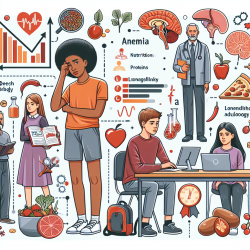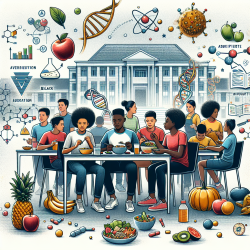Understanding the Link Between Nutrition and Learning: Insights for Practitioners
As practitioners dedicated to improving children's outcomes, understanding the factors influencing learning abilities is crucial. A recent study, "Changes in anemia and anthropometry during adolescence predict learning outcomes: findings from a 3-year longitudinal study in India," provides valuable insights into how nutritional status during adolescence impacts learning skills. This blog explores the study's findings and offers actionable insights for practitioners.
Key Findings from the Study
The longitudinal study followed adolescents aged 10-19 years in northern India over three years. It examined the association between changes in anemia, thinness, and stunting with reading and math proficiency. Key findings include:
- Persistent anemia, thinness, and stunting were associated with lower reading and math proficiency, particularly in boys.
- Improvement in anemia or thinness status in boys and stunting status in girls led to learning outcomes similar to peers who were never affected.
- Gender disparities were evident, with boys showing more improvement in nutritional status than girls.
Implications for Practitioners
These findings underscore the importance of addressing nutritional deficiencies during adolescence to enhance learning outcomes. Practitioners can leverage this knowledge by:
- Integrating Nutrition Education: Educate adolescents and their families about the importance of nutrition for cognitive development and learning.
- Collaborating with Schools: Work with schools to implement nutrition programs that provide iron-rich foods and supplements, particularly targeting girls who are more prone to anemia.
- Monitoring Growth and Development: Regularly assess the nutritional status of adolescents to identify those at risk and intervene early.
Encouraging Further Research
While this study provides significant insights, it also highlights the need for further research to understand the complex interactions between nutrition, growth, and learning. Practitioners are encouraged to contribute to this body of knowledge by:
- Conducting local studies to understand the specific nutritional challenges faced by adolescents in different regions.
- Exploring interventions that combine nutritional support with educational strategies to maximize learning outcomes.
By focusing on these areas, practitioners can play a pivotal role in enhancing the educational achievements of adolescents through improved nutritional interventions.
To read the original research paper, please follow this link: Changes in anemia and anthropometry during adolescence predict learning outcomes: findings from a 3-year longitudinal study in India.










